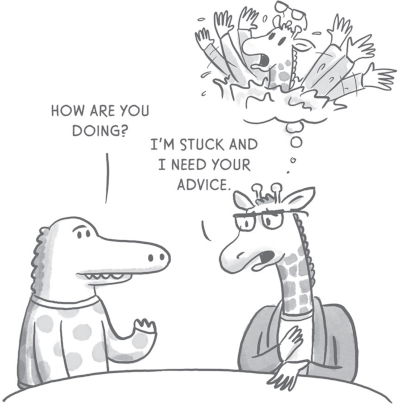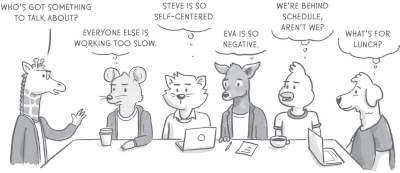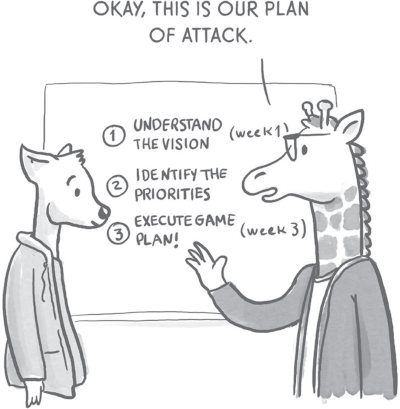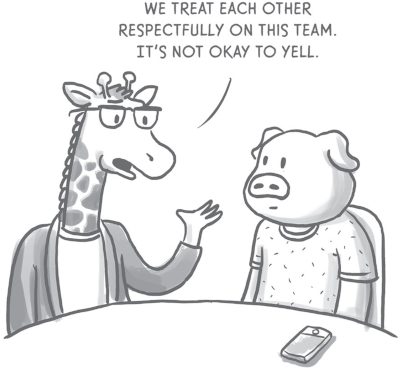
Book Summary: The Making of a Manager
What to Do When Everyone Looks to You
by Julie Zhuo | ⏱ 46 min read
To Mike, with whom I manage this beautiful life
💡 My Take
Julie’s book came up in my list when I was looking for good readings on becoming a manager. You can sense her enthusiasm about management and teamwork throughout the book. Julie is a former VP of Product Design at Facebook.
The core idea of the book is that while individual contributors only have an additive effect, a manager can have a multiplier effect on the team’s outcomes by influencing the purpose, the people and the processes of their teams.
The book is full of practical advice, both on transitioning to management and on handling scenarios ranging from managing small teams and hiring at scale, to delivering critical feedback and letting people go. I wish Julie had also included her thoughts on strategies to negotiate, to influence people and to navigate company politics.
Although the book is intended for people who want to transition to management, I recommend it for everyone that has a manager. For less senior people, this book will make clear what to expect and demand from your own manager. And for more senior people, this book will provide useful advice as you start coaching your less senior colleagues.
Although I found the content to be great, I felt the structure of the book was weak and made it particularly challenging for me to summarise it. But don’t let this discourage you. Julie’s book convinced me that a great manager can bring a lot of value. It is a great read. 😊
1-Page Summary
- 🐣 Managers are made, not born.
- 🙌 The manager’s job is to get better outcomes from a group of people working together through influencing 🎯 purpose (why), 👫 people (who) and ⚙️ process (how). A manager personally doing the job is having an additive effect, like an individual contributor. By influencing purpose, people and process, a manager can have a multiplier effect on the team’s collective outcome.
- 🦋 The first three months as a manager are a time of big transition. Leverage your unique advantages, prepare for the challenges and seek support.
- 🧍♀️ To manage a small team focus on people. Develop a healthy manager-report relationship and create an environment of support.
- 🔄 Giving feedback is a key part of leadership, whether things are going well or not. Great managers are excellent coaches. They help others improve by giving them effective feedback.
- 🪞 To be a great manager, it’s important to know yourself well. Understand your strengths, your values, your comfort zones, your blind spots and your biases. In order for you to have a good handle on your team, you need to have a good handle on yourself first.
- 📆 In order to have an effective meeting set a crystal clear purpose. Invite the right people required to achieve that purpose and allow everyone to contribute. Practice clarity and efficiency. Don’t let the conversation deviate from its primary purpose.
- 1️⃣ At a growing organization, hiring is the single most important thing you can do. Active involvement and intentional planning is required from hiring managers.
- 🔭 Business success requires a clear vision and a consistent process of planning and effective execution.
- 🏆 The key skills needed when leading a growing team are setting a vision, hiring leaders, delegating responsibility and managing communication.
- 👍 The culture describes the norms and values that govern how things get done. To establish the kind of culture you want, communicate values consistently, lead by example, create appropriate incentives and establish traditions that celebrate these values.
- 🌟 A group of people that works well together, for a shared purpose guided by shared values, can build something that outlasts us.
Chapter by Chapter Summary
🐣 Introduction: Great Managers Are Made, Not Born


Running a team is hard because it revolves around people - multifaceted and complex beings.
Managers are made, not born. This book will:
- 💡 give you day-to-day tips on management.
- 🤔 help you understand the whys of management so you can be effective in the hows.
- 🫂 tell you that your fears and doubts are normal, and that you’ll figure it out.
You can read the chapters in any order, based on where you currently are in your role.
1️⃣ Chapter 1: What Is Management?


What Is Management About?
Management is about:
- 🙌 believing that a team can achieve more than a single person working alone.
- 😲 realizing that you don’t have to do everything yourself.
What Is the Manager’s Job?
The manager’s job is to get better outcomes from a group of people working together through influencing purpose (why), people (who) and process (how).
-
🎯 Purpose
Ensure that your team knows what success looks like and cares about achieving it. This will help avoid conflicts and mismatched expectations. Share the purpose at every opportunity.
-
👫 People
Make sure your team members are set up to succeed. In order for them to succeed they need to have both the skills and the motivation.
To manage people well, you must:
- build trust. A manager has to be trusted and respected in order to be able to influence others. Only when you have built trust with your reports will you have the credibility to help them achieve more together.
- understand their strengths and weaknesses (as well as your own).
- make good decisions about who does what.
- coach individuals to do their best.
-
⚙️ Process
A process describes how your team works together. Good processes keep tasks from becoming too complicated. Key processes include:
- Running effective meetings
- Learning from past mistakes
- Planning for the future
- Building a healthy culture
As your team grows, your ability to do the work yourself matters less. If you personally do the job you are adding an additive amount to the business and you are operating as an individual contributor. However, if you influence the purpose, people and process of your team you can have a multiplier effect on the team’s collective outcome.
Evaluating a Manager
- Look at the manager’s team’s outcomes. Did they achieve their goal?
- Check whether the manager’s team is set up for future success. Did they hire and develop individuals? Was the team happy and working well together?
Would You Be a Great Manager?
-
Do you find it more motivating to achieve a specific goal or to play a specific role?
A manager’s priority is to help the team succeed. What you will need to do for your team to succeed, changes as your team changes. If you are commited to your purpose, then you may enjoy this variation. If instead you love doing a specific activity, then your personal goals may conflict with the team’s needs.
-
Do you like talking with people?
Helping your team members succeed means talking with them regularly.
-
Can you provide stability in emotionally challenging situations?
If you are empathetic, undramatic and can be counted on to defuse tension, then you'll be good at handling the emotional situations that managers often face.
Why Become a Manager?
- In many organisations your ability to grow in your career requires to start managing people.
- If you want to be a CEO or VP, you need to move to the management track.
- You may want to make decisions. Note though, that the best outcomes come from inspiring people to action, not telling them what to do.
If you are not sure that management is right for you, try:
- mentoring others in your team
- taking on an intern
- interviewing managers who recently transitioned to understand their experiences
🌱 Chapter 2: Your First Three Months


Your first three months as a manager are a time of big transition. Here’s some advice depending on the path you followed to becoming a manager:
👶 Apprentice
You were asked to manage part of your manager’s growing team.
👍 Benefits:
- You can work with your manager on a plan for getting started.
- Define what your scope will be at the beginning and how it will change over time.
- Ask about how your transition will be communicated.
- Learn about the people that you’ll be managing.
- Understand the team goals and processes.
- Define what success looks like in your first three and six months.
- Define how the two of you will stay aligned on who does what.
- You have a sense of what works and what doesn’t.
- Create a list of all the things that work well and the things that could be better.
- You are able to ramp up quickly because you have context.
👎 Challenges:
- It can be awkward to manage former peers. Examples:
- Playing the role of coach. Do not avoid this. You are there to support and help your people with their goals.
- Having hard conversations.
- Having people treat you differently. It is up to you to establish a trusting relationship.
- It’s tricky to balance your individual contributor work with management.
🔭 Pioneer
You were among the first to take on a challenge that is now turning into a bigger team effort. You are starting a team.
👍 Benefits:
-
You’ve done the job, so you know what it takes. Pass the values and know-how to others. Calibrate with your team on what your goals, values and processes should be.
To prepare answer the following:
- How do I make decisions?
- What do I consider a job well done?
- What are all the responsibilities I took care of when it was just me?
- What’s easy or hard about working in this function?
- What new processes are needed now that this team is growing?
-
You get to build the team you want. Think about the people and culture you’re setting up. Ask yourself:
- What qualities do I want in a team member?
- What skills does our team need to complement my own?
- How should this team look and function in a year?
- How will my own role and responsibilities evolve?
👎 Challenges:
- You may not have much support. Lean on other managers inside or outside your organization who support related functions.
- It’s tricky to balance your individual contributor commitments with management.
👔 New Boss
You’re coming in to manage an existing team. You probably have past management experience.
👍 Benefits:
-
People cut you slack in the beginning, usually ~3 months.
- Ask as many questions as you can.
- Ask your manager for a list of people to reach out to.
-
You start with a blank slate.
So do your reports. Give everyone the benefit of the doubt, no matter what you’re told. Ask your reports:
- What did you and your past manager discuss that was most helpful to you?
- What are the ways in which you’d like to be supported?
- How do you like to be recognized for great work?
- What kind of feedback is most useful for you?
- Imagine that you and I had an amazing relationship. What would that look like?
👎 Challenges:
-
It takes time to adjust to the norms of a new environment. In your first few months, your primary job is to listen, ask questions, and learn. Don’t jump in right away to show that you are capable.
Ask your manager:
- What does it mean to do a great job versus an average or poor job? Can you give me some examples?
- Can you share your impressions of how you think Project X or Meeting Y went? Why do you think that?
- I noticed that Z happened the other day. Is that normal or should I be concerned?
- What keeps you up at night? Why?
- How do you determine which things to prioritize?
-
You need to invest in building new relationships.
-
You don’t know the job and what it takes.
Be honest with your own manager about what’s working for you and what isn’t in order to understand his expectations for your ramp up.
⏭️ Successor
Your manager is leaving and you are taking their place.
👍 Benefits:
- You have a sense of what works and what doesn’t.
- You’re able to ramp up quickly because you have context.
👎 Challenges:
-
It can feel awkward to manage former peers.
-
The increase in responsibility can feel overwhelming.
- Ask for support from your new manager as well as others around you.
- Be up front with your colleagues that they should expect a period of transition as you ramp up.
-
You feel pressure to do things exactly like your former manager.
Change is a prerequisite for improvement so move on from the past.
👥 Chapter 3: Leading a Small Team


Managing a small team is about mastering a few basic fundamentals:
- develop a healthy manager-report relationship
- create an environment of support
🧍♀️ Focus on People
People is by far the most important aspect you need to focus on. People need both the motivation and the skills to do great work. If people don’t do great work then maybe:
- They aren’t aware of what “great” looks like. You need to align on expectations.
- Their personal goals don’t match the job
- They don’t feel appreciated. They think nothing will change if they put in more or less effort (no rewards, no penalty).
- They lack the skills. Train them or hire someone that does.
To address concerns about someone’s work:
- First discuss whether your expectations about “great work” are aligned.
- Then discuss whether it’s a matter of motivation.
- Then dive into whether the issue is with skills.
🤝 Build Trust
A trusting relationship between you and your reports is necessary. Unless your reports tell you how they’re really feeling, you won’t be able to help them with their problems.
As the manager, the responsibility of building a trusting relationship lies more with you than with your reports. Your reports trust you if:
- They come to you with their biggest challenges.
- You both give each other critical feedback and it isn’t taken personally.
- They would work with you again.
🙃 Be Human
To earn trust with your reports you need to:
-
🫂 Unconditionally, respect and care about your report.
- learn what they care about
- understand that sometimes personal blends into the professional
-
⏳ Invest time to help your report.
Spending time on your team helps build trusting relationships. Do at least one 1:1 every week.
One-on-ones should be focused on what would help your report be more successful. It is not a status update.
Empower your report to find the answer themselves. Let them lead the 1:1 while you listen and probe.
- Discuss top priorities.
- Calibrate on what “great” looks like.
- Share feedback.
- Reflect on how things are going. Zoom out and talk about your report’s general state of mind.
Questions to get the 1:1 conversation going:
-
Identify. What matters for your report and what topics are worth spending more time on.
- What’s top of mind for you right now?
- What priorities are you thinking about this week?
- What’s the best use of our time today?
-
Understand. Once you’ve identified a topic to discuss, get to the root of the problem and to what can be done about it.
- What does your ideal outcome look like?
- What’s hard for you in getting to that outcome?
- What do you really care about?
- What do you think is the best course of action?
- What’s the worst-case scenario you’re worried about?
-
Support.
- How can I help you?
- What can I do to make you more successful?
- What was the most useful part of our conversation today?
-
😇 Be honest and transparent about your report’s performance.
Your report should have a clear sense at all times of what your expectations are and where they stand. Tell them if they are awesome, tell them if they are operating at a lower level than you’d like to see.
-
🫣 Admit your own mistakes and growth areas.
Showing up authentically will help you build better relationships with your reports.
💪 Help People Use Their Strengths
Great managers discover what is unique about each person and then capitalize on it. Pay attention to your team’s top talent. Don’t let the worst performers dominate your time.
Your top performers may not be asking for your attention, but if you help them dream bigger and become more capable leaders, your team will be able to do more as a whole.
☣️ Don’t Tolerate Toxicity
Talented people that bring toxicity to the team, have a divider effect which makes the whole team less effective.
🥲 You Don’t Always Have To Make It Work
The things a person cares about must also be what the team and the company care about. If not, that person might often be misaligned with what they want from their own career.
It might be better to join a different team or a different company. If we’re meant to do something else, let’s celebrate that instead of seeing it as a failure.
🔄 Make People Moves Quickly
If you don’t believe someone is set up to succeed in their role, the kindest thing you can do is to be honest with them and support them in moving on.
- Help them find a new role in your organization. Don’t do that for people who lack the right skills or who exhibit toxic behavior.
- Let them go. Do it respectfully and directly. Don’t prolong your decision. Help you report get on the best possible path and use the experience to become a better manager.
👂Chapter 4: The Art of Feedback


Giving feedback is a key part of leadership, whether things are going well or not. Great managers are excellent coaches, and the secret to coaching is giving effective feedback.
💡 How To Inspire a Change in Behavior
-
🎯 set clear expectations at the beginning
Agree on what success looks like before starting any work.
- Discuss what great, okay or bad job looks like for your report.
- Give advice to help them start well.
- Discuss common mistakes to avoid.
-
👍 give task-specific feedback often
Provide feedback about something they did recently, while it is still fresh in their memory. Tell them in detail what went well and what could be improved.
-
🔄 share behavioral feedback thoughtfully and regularly
Behavioral feedback helps people understand how others see them, which may be different from how they see themselves. Be thoughtful with your words and use specific examples.
-
🗣️🗣️ collect 360-degree feedback for maximum objectivity.
360-degree feedback is aggregated behavioral feedback from multiple people, not just your own. Therefore, it tends to be a more complete and objective view of how someone is doing.
📈 How To Make Your Feedback Lead To Improvement
A great coach can help others improve under their guidance.
-
🗓️ Give feedback often.
Whenever you see someone in action, see if there's something useful you can tell them. Aim for at least 50% positive feedback. Devote a single 1:1 every month to discuss behavioral feedback and career goals.
-
😲 Make sure your feedback is understood.
What you say and what the listener understands are not always the same. The best way to make your feedback understood is to:
-
make the listener feel safe.
The listener views the feedback conversation as a threat. They enter survival mode and as a result they are less capable of absorbing and applying your observations.
-
show that you're saying it because you care about them.
If you come off with an ulterior motive (you're judging them, you want to be right etc) the message won’t get through.
-
ask them to summarize their takeaways and next steps
-
summarize in writing what was discussed.
This helps clarify the points being made.
-
help the person hear the same message many times and from many sources (e.g. 1:1s, 360-degree feedback)
-
-
🎯 Make your feedback as specific as possible.
Use clear examples that get at the why so it’s easier for the listener to know what you mean.
-
👍 Clarify what success looks and feels like.
-
🚀 Suggest next steps.
-
📌 Be clear about whether you’re setting an expectation or offering a suggestion.
Don’t overdo this or you risk not empowering your team to learn to solve problems on their own.
😐 How to Deliver Critical Feedback
-
🧑💼 The best way to give critical feedback is to deliver it directly and dispassionately. Say what you perceive the issue to be, what made you feel that way, and how you’d like to work together to resolve the concern.
Your report might not agree with some of your decisions. It is impossible to be an influential leader and making everyone agree with you. Acknowledge the disagreement respectfully, then move on.
-
😇 Approach it with an honest desire to understand your report’s perspective. State your point directly and then follow up with “Does this feedback resonate with you? Why or why not?”.
-
🙊 Don’t use charged language or personal declarations (”you’re thoughtless” instead of “your action was thoughtless”). It will put the other person on the defensive.
-
🧘 Don’t engage when you are upset. You may say things in anger that will break relationships that took months or years to build.
🧘 Chapter 5: Managing Yourself


In order to be a great manager, it’s important to know yourself well. This includes understanding your strengths, your values, your comfort zones, your blind spots and your biases. For you to have a good handle on your team, you need to have a good handle on yourself first.
Managers often feel unsure because they are:
- expected to have answers, especially when things get hard.
- constantly put in the position of doing new things.
🤔 Know Your Strengths and Weaknesses
-
💪 Identify your strengths
Great management typically comes from playing to your strengths rather than from fixing your weaknesses.
- How would friends describe me in three words?
- What are my three qualities that I am the proudest of?
- What personal traits led to my successes?
- What positive feedback do I often get from my manager or peers?
-
🤓 Identify your weaknesses
- What do I criticize myself for?
- What skills do I wish I had?
- What are three things that trigger me?
- What negative feedback do I often get from my manager or peers?
-
🧜♀️ Calibrate with reality
Make sure that the view you have of yourself matches reality. Ask others for their honest opinions:
- Ask your manager to help you calibrate yourself.
- Pick 3 to 7 people whom you work closely with and ask for feedback.
- Ask for task-specific feedback.
🪞 Understand Yourself at Your Best and Worst
Know which environments help you to do your best work and which situations trigger a negative reaction.
- Identify your ideal environment
- Which six-month period of my life did I feel the most energetic and productive? What gave me that energy?
- In the past month, what moments stood out as highlights? What conditions enabled those moments to happen, and are they re-creatable?
- In the past week, when was I in a state of deep focus? How did I get there?
- Identify your triggers
- When was the last time someone said something that annoyed me more than it did others around me? Why?
- What would my closest friends say my pet peeves are?
- Who have I met that I’ve immediately been wary of? Why?
- What’s an example of a time when I’ve overreacted and later regretted it? Why?
😌 Find Confidence on Tough Days
- Give yourself permission to worry. Everyone has hard times.
- Question your negative thoughts. They are often irrational. Probably due to your biases.
- Visualize success. Brain imaging studies show that when we picture ourselves doing something, the same part of our brain is engaged as if we were actually doing that activity. Visualisation can improve both your outcomes and your confidence.
- Ask for help. It shows courage and self-awareness. Find your support group.
- Celebrate the little wins.
- Take care of yourself by establishing boundaries. Make time for personal life. You can’t do your best work unless you physically feel your best.
📈 Aim to Be Twice as Good
To achieve that:
- Ask for feedback.
- Treat your manager as a coach.
- Make a mentor out of everyone. Ask for specific advice on tasks.
- Set aside time to reflect and set goals.
- Take advantage of formal training (e.g. company seminar, industry conference, professional coaching etc.).
📆 Chapter 6: Amazing Meetings


In order to have effective meetings:
- 🎯 Set a clear purpose.
- 🧐 Invite the right people required to achieve that purpose 👆. No more no less.
- 🏕️ Create a safe space for everyone to contribute.
- 🔍 Don’t try to make a single meeting do too much.
- 🧭 Remind the group of its primary purpose when the conversation starts to deviate.
- 💡 Practice clarity and efficiency with your meetings.
🎯 Define the Meeting’s Purpose
Be crystal clear about the outcome you’re aiming for.
-
🧑⚖️ Making a decision
In a decision meeting, present the different options and ask a decision maker to make a call. You don’t need consensus. Disagree and commit in order to move forward.
For a successful decision meeting:
- Get a decision made.
- Include the people directly affected by the decision, as well as a clearly designated decision-maker.
- Present all options and with relevant background information.
- Allow equal time to dissenting opinions and make sure everyone feels heard. Everyone should leave with a sense of trust in the process.
-
📊 Sharing information
For a successful information meeting:
- Make the group feel like they learned something valuable.
- Convey key messages clearly and memorably.
- Keep the audience engaged (through dynamic speakers, rich storytelling, skilled pacing, interactivity).
- Evoke an intended emotion - whether inspiration, trust, pride, courage, empathy, etc.
-
🔄 Providing feedback/review
The purpose of a feedback meeting is for stakeholders to understand and give input on work in progress.
For a successful feedback meeting:
- Get everyone on the same page about what success looks like.
- Honestly represent the current status of the work.
- Clearly frame open questions, key decisions, or known concerns.
- End with agreed-upon next steps.
-
💡 Generating ideas
To generate good ideas people need both:
- Time to think alone. Our brains are most creative when we’re by ourselves.
- Time to engage with others. Hearing different perspectives can lead to even better ideas.
For a successful ideas generation meeting:
- Produce diverse solutions by ensuring that each participant has alone-time to think and write down their ideas (either before or during the meeting).
- Consider all ideas from everyone.
- Help ideas evolve and build off each other through a meaningful discussion.
- End with clear next steps for how to turn ideas into action.
-
🫂 Team-bonding.
For a successful team-bonding meeting:
- Create better understanding and trust between participants.
- Encourage people to be open and authentic.
- Make people feel cared for.
🧐 Invite the Right People
You’re more likely to have a great meeting if everyone necessary and nobody extraneous is there.
In order to know whom to invite:
- Define what a great outcome looks like for your meeting.
- Decide which people are necessary to make that outcome happen.
📝 Give People a Chance to Come Prepared
Help stakeholders understand your content by allowing them to come prepared.
- Send out an agenda and documents ahead of time.
- Summarize the discussion at the end of the meeting.
- After the meeting send out a recap with:
- a summary of the discussion.
- a list of specific action items and who is responsible for each.
- when the next check-in will be.
🏕️ Create a Safe Space for Everyone to Contribute
You will get better results if everyone contributes.
-
Set clear norms. If you want everyone to participate in your meeting, say that directly.
-
Change the meeting format to encourage participation. In unstructured group discussions participants choose if and when they speak. You can combat natural group dynamics by suggesting more structured approaches like:
-
going around the room
-
post-it note opening
People write their ideas on post-it notes, then post-it notes are clumped together, then the room discusses the various “clumps”. By encouraging people to get their own thoughts on paper, the barrier to participation is lowered.
-
-
Ensure equal speaking time
- Watch for interruptions.
- Help people to get a word in.
- Politely let overtalkers know it's someone else's turn.
🧹 Some Meetings Don't Need You or Don't Need to Exist
- If you trust that the right outcomes will happen without you, then you don’t need to be there.
- Cancel or revamp meetings that don’t seem to be valuable for anyone.
🎯 Chapter 7: Hiring Well


At a growing organization, hiring is the single most important thing you can do.
Hiring well is hard. Here's how to build a great team.
🧭 Design Your Team Intentionally
Plan ahead. A one-year-out organizational plan lets you stay ahead of hiring needs and gives you a framework for evaluating candidates.
Ask yourself:
- How many people will I add to our team this year?
- For each new hire, what level of experience am I looking for?
- What skills or strengths do we need?
- What skills or strengths do we already have that new hires can stand to be weaker in?
- What traits or experiences would add to our team's diversity?
🙋 Hiring Is Your Responsibility
Successful hiring managers form close partnerships with the recruiting team to hire the best people. A great hiring manager brings their understanding of the role (what it needs and why it is exciting) as well as their time to personally connect with candidates.
-
📌 Describe your ideal candidate as precisely as you can.
Write the job description yourself and be specific about the skills you want. Only when your recruiter understands the nuances you are seeking, will they be able to help you hire the right people.
-
📝 Plan how to find candidates.
Once you know what kind of person you want:
- brainstorm with the recruiter where to look for your ideal candidate.
- decide what to look for in a resume.
-
🙌 Deliver an amazing interview experience.
Avoid mistakes like:
- long gaps between next steps
- making candidates repeat themselves
- giving candidates confusing information
-
🤩 Show candidates you want them.
When you make an offer, you and the recruiter should make the candidate feel wanted.
⚠️ Hiring Is Risky, But Make Smart Choices
Interviews can't perfectly predict someone's success:
- You can't recreate the work environment in an hour-long meeting.
- Interviewers have their own biases.
- People are capable of enormous change.
To increase your chances of a successful hire:
-
🧐 Examine past examples of similar work.
The best predictor for how someone will do in the future is to understand how they’ve done in the past on similar projects in similar environments.
-
📞 Seek out trusted recommendations.
A recommendation from someone who has worked with the candidate is more reliable than an interview.
When evaluating references be mindful of:
- People typically improve their skills over time, so discount negative feedback that isn’t recent.
- If you only look for candidates from within your network, you might not get a diverse pool of candidates.
-
🧍♂️🧍♀️ Involve multiple interviewers.
More interviewers can reduce bias and catch things one person might miss.
When discussing the candidate, each interviewer should record their thoughts and decisions before hearing others' opinions to avoid groupthink.
-
🗣️ Look for passionate advocates rather than consensus.
Don't hire weak candidates. Choose someone with a passionate advocate, even if they have mixed reviews.
-
📝 Prepare your interview questions ahead of time.
If you don’t do this you risk basing your hiring decision on your impression of the person and the flow of the conversation rather than on the substance of their answers.
Some all-purpose questions are the following:
- What challenges interest you and why? Can you describe your favorite project? (shows what the candidate is passionate about)
- What are your greatest strengths? What would your peers agree are your areas of growth? (shows candidate’s self awareness and their actual strengths and weaknesses)
- Where do you see yourself in three years? (show the candidates ambitions as well as how goal oriented and self-reflective they are)
- What was the hardest conflict you’ve had in the past year? How did it end, and what did you learn? (shows how the candidate works with others and how they handle conflict.)
-
☣️ Don't hire anyone with toxic behavior.
Warning signs:
- bad-mouthing past employers
- blaming failures on others
- insulting other groups of people
- asking what the company can do for them instead of the reverse
- being arrogant or lacking self-awareness
-
🌈 Build a team with diverse perspectives.
- Diversity in all aspects (gender, race, work history, life experiences etc) can help the team think more creatively, avoid biases, and be more effective.
- You're more likely to get innovative ideas from a diverse group of people.
-
🚀 Hire people who are capable of more.
Hiring someone who can do more than the role currently needs means they can help with bigger problems in the future.
As a manager, one of the smartest ways to multiply your team’s impact is to hire the best people and empower them to do more and more until you stretch the limits of their capabilities.
📈 Hiring at Scale
-
🎯 Hiring well requires careful execution.
Break the problem down into small parts, and ask your entire staff to play a role in helping the team grow.
- create a smooth, efficient recruiting process.
- improve your process (e.g. tweak emails, host events, better questions).
-
🔎 Do your research when hiring leaders.
Hiring a manager or a senior contributor is a big investment, and bad leadership hires are disproportionately more disruptive because they affect more people.
-
🌱 Take the long view with top talent.
Recruiting top talent is all about the relationships you build. Build your network, get to know rising stars in your field, and develop your team’s reputation.
-
🤹♂️ Build a great bench.
You shouldn’t be the single point of failure. Work should continue as normal even if you are not there. This shows great leadership because it means your team can thrive without you.
This doesn't mean you're replaceable. Your job is to empower your team. As the team becomes more capable, your ambitions should grow too. You just can now grow and tackle the next big problem.
-
🧑🏫 Create a culture that prioritizes hiring well.
Establish a culture that continues your values on a larger scale. To do this:
- Pay close attention to how you set the tone for hiring.
- Coach your leaders to treat team building with care.
- Ensure your leaders dedicate time and attention connecting with great candidates.
- Repeatedly talk about your values so that everyone understands what great talent looks like.
- Make it clear that building a team is everyone’s job.
🏆 Chapter 8: Making Things Happen


Success in business is about consistent planning and execution - it is not about a single brilliant insight.
Success requires an effective process for trying, learning and doubling down on what’s working.
🔭 Have a Concrete Vision
As a manager, it’s important to define and share a concrete vision for your team that describes what you’re collectively trying to achieve. This creates a shared sense of purpose.
An impactful vision:
- is bold.
- is measurable, you know instantly whether you’ve hit it or not.
- is easily repeatable from person to person.
- does not describe how but what the outcome will be.
To create such a vision ask yourself the following:
- What do you want to be different in 2-3 years compared to now?
- How would you want people from adjacent teams to describe what your team does? What do you hope will be your team’s reputation in a few years? How far off is that from where things are today?
- What unique superpower(s) does your team have? When you’re at your best, how are you creating value? What would it look like for your team to be twice or five times as good?
- If you had to create a quick litmus test that anyone could use to assess whether your team was doing a poor job, a mediocre job, or a kick-ass job, what would that litmus test be?
📝 Make a Realistic Plan to Achieve Your Vision
When emergencies arise, a good plan provides the foundation to adapt quickly. A good plan:
- Must have a realistic shot at achieving your vision.
- Understands the problem and focuses on what's important.
- Aligns with the company's overall strategy.
To create a good plan:
-
Craft it based on your team’s strengths.
-
Focus on doing a few things well.
The majority of the results come from a minority of the causes. Identify what matters most and focus on that. Effort doesn’t count. Results are what matter.
Few people take objectives really seriously. They put average effort into too many things, rather than superior thought and effort into a few important things.
Prioritization is key and it’s an essential managerial skill. The best way to practice prioritization is to order any list you make by importance.
-
Define who is responsible for what
When ownership isn’t clear there is a chance for ambiguity.
-
Break big goals into smaller tasks
- Treat big projects like a series of smaller ones.
- Set milestones and work backwards from the deadline to figure out who needs to do what every week.
- Ask people to set and publicly commit to their weekly goals to create accountability.
- Have regular reviews to keep momentum.
🔨 Focus on Execution
The best plans don’t matter if you can’t execute quickly and accurately enough to make a difference.
Good execution means:
- choosing a reasonable direction
- learning quickly what works and what doesn’t
- adjusting to reach your goal
- being fast
Your team is executing well when:
- tasks are prioritized
- there is a decision making process that everyone understands and trusts
- the team moves quickly, especially with reversible decisions
- after a decision, everyone commits
- plans get adjusted when new information comes up
- tasks are assigned with deadlines
- the team is resilient and constantly seeks to learn
- mistakes don’t happen twice
⚖️ Balance Short Term and Long-Term Outcomes
The decisions you make must weigh the trade-offs between a short-term and a long-term approach. To find the right balance:
-
Define a long-term vision and work backward.
Understand the problems you are trying to solve. Based on that, define the priorities for your team.
-
Have team members work on all short-term, medium-term and long term projects.
That way you will make constant improvement while keeping sight of future opportunities.
-
Talk about how everything relates to the vision.
If everyone understands the vision, then the team’s actions will be aligned in making it a reality. When people don’t understand what matters and why, that’s when conflicts arise.
🏭 Keep Improving Your Process
The way we make progress should also be a work in progress.
-
Do debriefs (retrospectives or postmortems). Regularly reflect on what went well, what didn’t go well, and what would the team do differently next time. To have effective debriefs:
- create a safe environment for honest discussions
- present facts objectively
- use language that takes collective accountability (e.g. ”our process failed”)
- after the retrospective, write down and share the learnings
-
Create repeatable best practices. Automate and create playbooks that lay out in clear detail what all the right steps are given the current variables. Create playbooks for:
- running a team meeting
- closing a new hire
- completing a project on time and on budget
🙌 Chapter 9: Leading a Growing Team


The key skills needed when leading a growing team are:
- 🔭 setting a vision
- 🚀 hiring leaders
- 🙋 delegating responsibility
- 📡 managing communication
📈 Managing Big Teams Versus Small Teams
-
🕊️ Direct to indirect management.
One of the biggest challenges of managing at scale is finding the right balance between going deep on a problem and delegating to others.
-
😬 People treat you differently.
When people don’t know you and see that you’re in a position of authority, they’re less likely to challenge you when they think you’re wrong. To mitigate this:
- Emphasise that you welcome dissenting opinions and reward those who express them.
- Own your mistakes.
- Use language that invites discussion (”i may be totally wrong here, so tell me if you disagree. My opinion is..”)
-
🤹 You will have context switching all day.
As the number of projects increase focused blocks on a single topic shrink.
-
1️⃣ You must prioritize.
You can’t do everything and perfectionism is not an option.
-
🧍 The skills that matter become more and more people-centric.
As teams grow, managers spend less of their time on their discipline. What matters more is that they can get the best out of a group of people.
At higher levels of management, the job starts to converge regardless of background. Success becomes more and more about:
- hiring leaders
- building self-reliant teams
- establishing a clear vision
- communcating well
🕊️ Delegating Well
You want to neither micromanage and run every decision nor to be the absentee manager that will make your reports wish they had more support. To delegate well:
-
🤔 Give people big problems to solve
If you believe your report is capable of solving the problem then delegate it to your report. Tell everyone else that they should now be considered the owner of the problem. This both empowers the delegate and creates accountability.
There is no greater sign of trust than handling your report a difficult problem.
-
🤝 Make sure your reports understand the vision
When the vision is clear, the right actions tend to follow:
- Align on why you’re doing what you’re doing and what success looks like.
- Define the biggest priorities. Talk about them with your reports and discuss how they might play a role.
- Once top priorities are covered, make sure your report establishes healthy processes for their teams. Align on how you think about people, purpose and process.
- Make sure your report knows what matters to you when it comes to team building.
- Do they understand what you expect of them as a coach for their own reports?
- Do you agree on how their team members perform?
😫 What to Do When a Manager Struggles
A manager’s job is to be a positive multiplier for their team. When they aren’t, the cost is high. Ask yourself, “If the role was open, would you rather rehire your current leader or take a gamble on someone else?”. If the answer is no, let them go.
👌 Aim to Put Yourself Out of a Job
Growing teams means that you are constantly looking for ways to replace yourself in the job you are currently doing. The rule of thumb for delegation is:
Spend your time and energy on the intersection of 1) what’s most important to the organization and 2) what you’re uniquely able to do better than anyone else. Anything your report can do just as well or better than you, you should delegate.
For the things that you do better than your reports, unless it falls into the “most important priorities” bucket or you don’t believe they are set up to succeed, you should still try to delegate as much as possible and coach them along the way.
As for what you shouldn’t delegate, consider the unique value you’re able to add when it comes to the organiszation’s top priorities.
As a manager you are well positioned to:
- identify and communicate what matters. Your role has broader scope so you are better placed to see patterns that your reports might miss.
- hiring top talent. Prospective candidates are generally interested in talking with senior leaders, so you have an advantage when it comes to finding and closing talent.
- resolving conflicts withing your group. Make sure your leaders know to quickly escalate to you whenever two goals come into conflict or when the priorities aren’t clear.
👍 Chapter 10: Nurturing Culture


The culture describes the norms and values that govern how things get done. In order to establish the kind of culture you want do the following:
1. 🪞 Know the Kind of Team You Want to Be a Part Of
-
😲 Understand your current team
- What three words describe your team's personality?
- When were you most proud of your team and why?
- What does your team do better than most other teams?
- What would your team members say the values of the team are?
- How similar is your team’s culture to the broader organization culture?
- What does your team do well or not so well?
- What are the top three complaints people have about how things work?
-
🔮 Understand your aspirations
- What five words would you want others to use to describe your team's culture? Why?
- What could go wrong if you stick too strictly to these qualities? Are you okay with that?
- List the things you admire about other teams or companies. Why do you admire them? What downsides do they have?
- List the things you don't want to copy from other teams or companies. Why not?
-
🤔 Understand the difference
- How close is your team to your aspirations?
- What is a strength of your team that you also value highly?
- Where are the biggest gaps between your current team culture and your aspirations?
- What could stop you from reaching your aspirations? How will you overcome these obstacles?
- Imagine how you want your team to work in a year’s time. How would you describe to a report what you hope will be different then compared to now?
After you know the values you want your team to have, make a plan to help these values flourish.
2. 🗣️ Keep Talking About What’s Important
When you value something deeply, talk about it.
- Explain why it’s important to you
- Assume that for the message to stick, it should be heard ten different times and said in ten different ways.
The more people you can get to share your message, the more impact it will have. Talking about your values makes you a more authentic and inspiring leader.
3. 🐎 Lead by Example
People watch their bosses closely to understand the team’s values and norms.
If something is important to you and you’d like the rest of your team to care about it, be the first person to live that value.
4. 🥇 Create the Right Incentives
Ensure that your environment rewards people who behave according to your team’s values and holds people accountable when they don’t.
Note that even the best intentions can lead to bad incentives due to second order effects. For example:
-
rewarding individual performance over anything else
Your team might learn to not work as a group.
-
rewarding short-term gains over long-term investments.
You might end up working on lower impact work.
-
rewarding lack of perceived issue or conflict
Your team might learn to hide their conflicts.
-
rewarding the loudest voice
If you give a raise to someone who threatens to leave, it might encourage others to do the same.
To resolve incentive traps, regularly check if your team’s behavior matches your stated values.
5. 🌟 Invent Traditions that Celebrate Your Values
Rituals create actions around which team members can bond.
Pay attention to your own actions as well as what behaviors you are rewarding or discouraging. This tells the story of what you care about and how you believe a great team should work together.
🧗 Epilogue: The Journey is 1% Finished


A group of people that works well together, for a shared purpose guided by shared values, can build something that will outlast us.